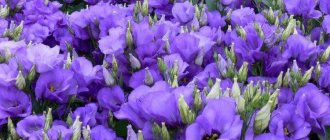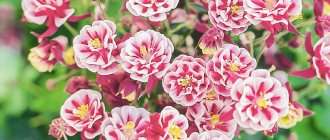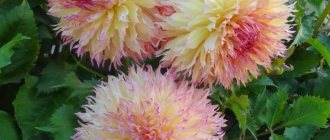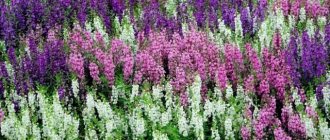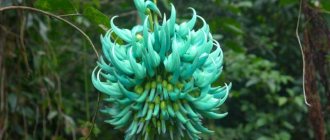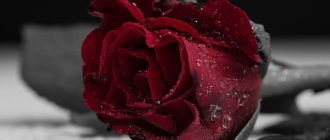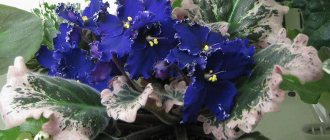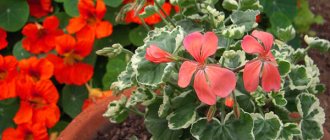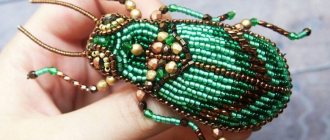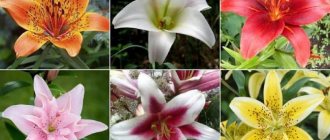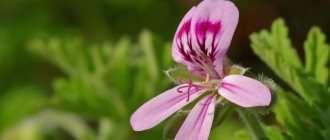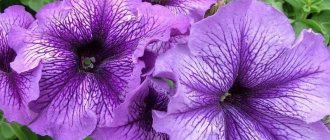Author: IsTOPnik
28 October 2022 09:28
Community : PhotoWorld
Tags: in the world video beauty small flower facts photo flowers
3979
10
1
Flowers are one of the main decorations of our planet. No matter how beautiful works of art a person creates, none of them can compare with the simplest flower; it will surpass both in beauty and aroma.
There are a huge number of flowers on Earth, which differ not only in size, but also in structure and color. There is a separate branch of horticulture called floriculture. Specialists are engaged in growing ornamental plants, developing new varieties that amaze with their beauty. Thanks to the efforts of flower growers, unique plants have been bred, but the smallest flowers in the world can surprise even those who are far from the world of botany.
Faucaria
0
Source:
See all photos in the gallery
The plant belongs to the Aizov family. Its homeland is South Africa, which has a particularly dry climate. It can accumulate moisture in its leaves and other parts, thanks to which it survives during periods when there is practically no precipitation. The name "Faukaria" comes from two Greek words that can be translated as "mouth" and "many". The stem of the plant is very short, and the leaves resemble a toothy mouth. This helps it repel animals that might try to eat it. Faucaria begins to bloom in July or August. The buds begin to bloom from midday to evening and are yellow in color. If the weather is cloudy, the buds are closed. Lasts about 6-8 days. The height of this plant does not exceed 10 cm. Its flowers are quite large, considering the size of Faucalia itself, about 6-7 cm.
Functions and purposes
Petals have different functions and purposes depending on the type of plant. Generally, petals protect certain parts of the flower and attract/repel certain pollinators.
Function
This is the location of the petals on a flower—the corolla, for example. Buttercups have shiny yellow flower petals that contain landmarks among the petals to help the pollinator reach the nectar. Pollinators have the ability to identify specific flowers that they want to pollinate.[9] By using incentives, flowers attract pollinators and establish relationships with each other, in which case pollinators will always remember to guard and pollinate those flowers (unless incentives are consistently met and competition prevails).[10]
Smell
The petals can emit different scents to attract desired pollinators.[11] or repel unwanted pollinators.[12] Some flowers will also mimic odors produced by materials such as decaying meat to attract pollinators to them.[13]
Color
Different color characteristics are used by different petals, which may attract pollinators with poor olfactory abilities or that only come out at certain times of the day. Some flowers can change the color of their petals as a signal to mutual pollinators to move closer or stay away.[14]
Shape and size
Additionally, the shape and size of the flower/petal are important when choosing the type of pollinators they need. For example, large petals and flowers attract pollinators at long distances or are large themselves. [14] Together, scent, color, and petal shape play a role in attracting/repulsing certain pollinators and providing suitable conditions for pollination. Some pollinators include insects, birds, bats and wind.[14]In some petals, a lower, tapered, stem-like basal part called the claw and a wider distal part called the blade (or limb) can be distinguished. Often the claw and blade are at an angle to each other.
Rebutia
0
Source:
The genus of cacti, which includes 41 species, is called Rebucea. Their homeland is Argentina, Bolivia and Peru. Nowadays these are popular indoor flowers; they are loved because they are miniature in size, unpretentious and constantly bloom. All of these dwarf cacti have spherical stems covered with a large number of spines. Their length is no more than 5-7 cm. The flowers are bright orange, sometimes they can have a yellowish, reddish or pink tint. They appear from April to June. They open during the day, in sunny weather, and close at night. Flowers are usually up to 3 cm in length, the diameter of some of them is up to 6 cm. Each flower lasts for at least 3 days, one individual plant blooms for several months.
Mühlenbeckia
0
Source:
The plant is native to Australia and New Zealand. It is evergreen, from the buckwheat family. There are more than 25 species of it. The length can be from 15 cm to 3 m. The thin stems of Mühlenbeckia are covered with bark, it is brown in color, the leaves can be of different shapes. The inflorescences form clusters, the diameter of one flower is no more than 5 mm. The plant begins to bloom in early August and ends at the end of this month. The flowers are either white or yellowish with a green tint. Many gardeners choose this plant because... it is not susceptible to viral and fungal diseases. It also cleans the air well, is unpretentious, and decorates the room.
Miniature orchid
0
Source:
People call them dwarf orchids. The height of such flowers does not exceed 15-20 cm. On average, they have 5-7 leaves, which remain green throughout the year. Up to 15 flowers grow on one peduncle; sometimes, to prevent the plant from breaking under its weight, support nets are used. The size of the flowers varies, depending on the variety of miniature orchid, it can be from 4 to 7 cm. In the smallest type of mini-orchid, the leaves grow up to 20 cm, and the flowers are about 3-4 cm in diameter. Flowering most often occurs in winter and lasts about a month .
Types of pollination
Wind pollination
Main article: Anemophilia
Wind-pollinated flowers often have small, dull petals and little or no scent. Some of these flowers often have no petals at all. Flowers that depend on wind pollination will produce large amounts of pollen because most of the pollen dispersed by the wind does not reach other flowers.[15]
Attracting insects
Flowers have various regulatory mechanisms to attract insects. One such useful mechanism is the use of colored landmarks. Insects such as a bee or butterfly can see the ultraviolet marks contained on these flowers, acting as an attractive mechanism invisible to the human eye. Many flowers have different shapes that help land a visiting insect and also encourage the insect to touch the anthers and stigmas (parts of the flower). One such example of a flower is the pohutukawa ( Metrosideros excelsa
), which regulates color differently. Pohutukawa contains small petals with brightly large red clusters of stamens.[14]Another attractive mechanism for flowers is the use of scents that are very attractive to humans. One such example is the rose. On the other hand, some flowers emit the smell of rotting meat and are attractive to insects such as flies. Darkness is another factor to which flowers have adapted, as nighttime conditions limit vision and color perception. The scent may be especially useful for flowers that are pollinated at night by moths and other flying insects.[14]
Attracting Birds
Flowers are also pollinated by birds and must be large and colorful to be distinguished from the landscape. In New Zealand, such native bird-pollinated plants include: kowhai ( Sophora
species), flax (
Phormium tenax
) and kaka's beak (
Clianthus puniceus
).
Flowers adapt a mechanism on their petals to change color, acting as a communication mechanism for bird visits. An example is the fuchsia tree ( Fuchsia excorticata
), which turns green when pollination is needed and turns red to stop birds from coming and pollinating the flower.[14]
Bat-pollinated flowers
The flowers can be pollinated by short-tailed bats. An example of this is the dactylanthus ( Dactylanthus taylorii
). This plant has its home underground, acting as a parasite on the roots of forest trees. In dactylanthus, only the flowers face the surface, and the flowers have no color, but have the advantage of containing a lot of nectar and a strong smell. They act as a useful mechanism for attracting the bat.[16]
Soleirolia
0
Source:
It was found by the English navigator Soleirol; it grew on the islands of Sardinia and Corsica. He was named after the discoverer. In its homeland, soleirolia, or, as it is also called, gelxina, is a low-growing shrub. It is a low plant. The leaves are arranged in pairs, their diameter is about 0.5 cm. The stems are fragile and thin, growing up to 20 cm in length. This small plant can form a luxurious green carpet; in warm countries it is grown on balconies. If you plant it in a pot, it will grow into a small but beautiful ball. The leaves of soleirolia are green, but there are varieties with silver or golden leaves, and they all form small mounds up to 5 cm in height. You should not plant it next to low plants, because... it will destroy them. One of the advantages of the flower is that it perfectly purifies the air. It blooms very rarely in apartments and does not bear fruit. But in nature it is covered with small whitish flowers; when they fade, reddish berries with seeds are formed.
Rose Si
0
Source:
One of the smallest roses in the world. The Indian botanist Sudhir Khetawat was able to grow it. The bud size of this miniature flower is only 5 mm, i.e. the size of a regular grain of rice. When the flower fully opens, its size does not exceed 1 cm. The flowers are semi-double and can be either white-pink or cream-colored. They have a moderate aroma. Rose Si blooms in waves throughout the season. The bush grows up to 15-25 cm. The foliage is elegant, glossy, the color is light green. The variety is considered resistant to various diseases and quite hardy. Can be grown on balconies and terraces.
Mullein
Typically, gardeners are attracted to mullein due to its abundant flowering. Its stems are completely covered with bright, medium-sized flowers: yellow, pink and snow-white. The inflorescences attract beneficial insects to the area, and the air around them is always filled with a cheerful buzz.
The perennial spikelet consists of flowers and half-opened buds arranged in several tiers. Flowering continues throughout the summer. Many types of mullein have a pleasant and subtle aroma.
Lithops
0
Source:
The word "lithops" comes from a combination of two Greek words that can be translated as "stone" and "appearance". It turns out that it means “appearance like a stone.” They also have a second name – “living stones”. Why these plants were given such a name will become clear if you see them at least once. They resemble pebbles in shape and color. And this is no coincidence. Lithops grow in deserts where animals eat all the vegetation. Thanks to their unusual appearance, they easily blend into the environment and are practically indistinguishable from stones. Only a flower that appears in the middle can tell you that this is a plant and not a pebble. Lithops consists of two thick petals, two halves, between them there is a shallow cleft from which a flower emerges. The largest plants reach 5 cm in width and length. There are many varieties of these “living stones”, at least 35 varieties. The flowers are most often white or yellow, sometimes growing orange, their diameter is 2.5 - 3 cm. It blooms from August to November.
The importance of pollination
Pollination is an important stage in the sexual reproduction of higher plants. Pollen is produced by the male flower or the male organs of hermaphroditic flowers.
Pollen does not move on its own and therefore requires wind or animal pollinators to disperse the pollen into the environment. stigma (botany) of the same or neighboring flowers. However, pollinators are quite selective in the flowers they choose to pollinate. This results in competition between flowers, and as a result flowers must provide incentives to turn to pollinators (unless the flower is self-pollinating or participating in wind pollination). Petals play an important role in the fight to attract pollinators. From now on, pollination can spread and the survival of many flower species can be extended.
Platystele jungermannioides
0
Source:
The smallest orchid is Platystele jungermannioides. It was discovered in the eastern Andes, in Ecuador. She grew up in the Cerro Candelaria nature reserve. Experts measured its flowers; they were 2.1 mm in size and consisted of very thin, translucent petals. It was studied by the American botanist Lou Jost. He found out that the thickness of the petals is no more than 1 cell. The flower was included in the Guinness Book of Records. Before this, the record holder was another orchid, the flower size of which was about 2.5 mm.
